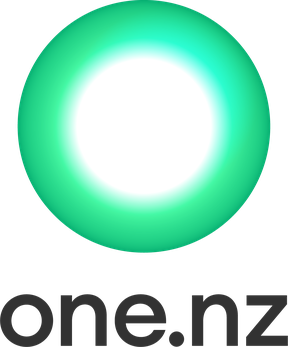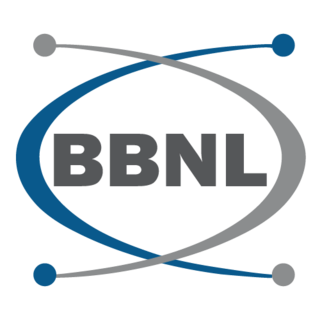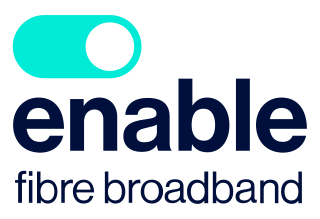Telecommunications in Ireland operate in a regulated competitive market that provides customers with a wide array of advanced digital services. This article explores Ireland's telecommunications infrastructure including: fixed and mobile networks, The voice, data and Internet services, cable television, developments in next-generation networks and broadcast networks for radio and television.
Local loop unbundling is the regulatory process of allowing multiple telecommunications operators to use connections from a telephone exchange to the customer's location. The physical wire connection between the local exchange and the customer is known as a "local loop" and is owned by the incumbent local exchange carrier. To increase competition, other providers are granted unbundled access.
Telecommunications in New Zealand are fairly typical for an industrialised country.
Digital subscriber line is a family of technologies that are used to transmit digital data over telephone lines. In telecommunications marketing, the term DSL is widely understood to mean asymmetric digital subscriber line (ADSL), the most commonly installed DSL technology, for Internet access.

Telecommunications in Australia refers to communication in Australia through electronic means, using devices such as telephone, television, radio or computer, and services such as the telephony and broadband networks. Telecommunications have always been important in Australia given the "tyranny of distance" with a dispersed population. Governments have driven telecommunication development and have a key role in its regulation.

Spark New Zealand Limited is a New Zealand telecommunications and digital services company providing fixed-line telephone services, mobile phone services, broadband, and digital technology services. Its customers range from consumers to small - medium business, government agencies and large enterprise clients. It was formerly known as Telecom New Zealand until it was rebranded to Spark on 8 August 2014. It has operated as a publicly traded company since 1990. Spark's mobile network reaches 98% of New Zealand, with over 2.7 million mobile connections and 687,000 broadband connections

One New Zealand is a New Zealand telecommunications company. One NZ is the largest wireless carrier in New Zealand, accounting for 38% of the country's mobile share market in 2021.

TelstraClear Limited was New Zealand's second-largest telecommunications company before being acquired by Vodafone New Zealand in October 2012, previous to which it was a subsidiary of Australian company Telstra.

Be Unlimited was an Internet service provider in the United Kingdom between 2004 and 2014. Initially founded as an independent company by Boris Ivanovic and Dana Tobak in 2005, it was bought by Spanish group Telefónica Europe in 2006 before being sold on to BSkyB in March 2013 in an agreement which saw BSkyB buy the fixed telephone line and broadband business of Telefónica Europe which at the time traded under the O2 and BE brands. The deal saw BSkyB agree to pay £180 million initially, followed by a further £20 million after all customers had been transferred to Sky's existing business. The sale was subject to regulatory approval in April 2013, and was subsequently approved by the Office of Fair Trading on 16 May 2013.

Orcon Limited is a New Zealand telecommunications company. It is New Zealand's fourth largest Internet service provider (ISP). In 2013 it had a 5% share of the fixed line market.

Free S.A.S. is a French telecommunications company, subsidiary of Iliad S.A. that provides voice, video, data, and Internet telecommunications to consumers in France. Its head office is in the 8th arrondissement of Paris and it is the second-largest ISP in France.
Openreach Limited is a company wholly owned by BT Group plc, that maintain telephone cables, ducts, cabinets and exchanges that connect nearly all homes and businesses in the United Kingdom to various national broadband and telephone networks. They were established in 2006 following an agreement between BT and the UK's telecoms regulator, Ofcom, to implement certain undertakings, pursuant to the Enterprise Act 2002, to ensure that rival telecom operators have equality of access to BT's local network.
Internet in Australia first became available on a permanent basis to universities in Australia in May 1989, via AARNet. Pegasus Networks was Australia's first public Internet provider in June 1989. The first commercial dial-up Internet Service Provider (ISP) appeared in capital cities soon after, and by the mid-1990s, almost the entire country had a range of choices of dial-up ISPs. Today, Internet access is available through a range of technologies, i.e. hybrid fibre coaxial cable, digital subscriber line (DSL), Integrated Services Digital Network (ISDN) and satellite Internet. In July 2009, the federal government, in partnership with the industrial sector, began rolling out a nationwide fibre-to-the-premises (FTTP) and improved fixed wireless and satellite access through the National Broadband Network. Subsequently, the roll out was downgraded to a Multi-Technology Mix on the promise of it being less expensive and with earlier completion. In October 2020, the federal government announced an upgrade by 2023 of NBN fibre-to-the-node (FTTN) services to FTTP for 2 million households, at a cost of A$3.5 billion.
Internet access is widely available in New Zealand, with 94% of New Zealanders having access to the internet as of January 2021. It first became accessible to university students in the country in 1989. As of June 2018, there are 1,867,000 broadband connections, of which 1,524,000 are residential and 361,000 are business or government.
The Ultra-Fast Broadband initiative is a New Zealand Government programme of building fibre-to-the-home networks covering 87% of the population by the end of 2022. It is a public–private partnership of the government with four companies with total government investment of NZ$1.5 billion. The project planned to provide speeds of at least 100 Mbit/s downstream and 50 Mbit/s upstream, though upgradable to 10 times that speed.
10G-PON is a 2010 computer networking standard for data links, capable of delivering shared Internet access rates up to 10 Gbit/s over dark fiber. This is the ITU-T's next-generation standard following on from GPON or gigabit-capable PON. Optical fibre is shared by many subscribers in a network known as FTTx in a way that centralises most of the telecommunications equipment, often displacing copper phone lines that connect premises to the phone exchange. Passive optical network (PON) architecture has become a cost-effective way to meet performance demands in access networks, and sometimes also in large optical local networks for fibre-to-the-desk.
BT Superfast Fibre is a broadband service in the United Kingdom provided by BT Consumer, the consumer sales arm of the BT Group. The underlying network is fibre-to-the-cabinet (FTTC), which uses optical fibre for all except the final few hundred metres (yards) to the consumer, and delivers claimed download speeds of "up to 76 Mbit/s" and upload speeds of "up to 19 Mbit/s" depending on package selected. The fibre terminates in a new roadside cabinet containing a DSLAM, from where the final connection to the customer uses VDSL2 technology.

The National Broadband Network (NBN) is an Australian national wholesale open-access data network. It includes wired and radio communication components rolled out and operated by NBN Co, a government-owned corporation. Internet service providers, known under NBN as retail service providers or RSPs, contract with NBN to access the data network and sell fixed Internet access to end users.

BharatNet, also known as Bharat Broadband Network Limited (BBNL), is a central public sector undertaking, set up by the Department of Telecommunications, a department under the Ministry of Communications of the Government of India for the establishment, management, and operation of the National Optical Fibre Network to provide a minimum of 100 Mbit/s broadband connectivity to all 250,000-gram panchayats in the country, covering nearly 625,000 villages, by improving the middle layer of nation-wide broadband internet in India to achieve the goal of Digital India.

Enable NetworksLimited, trading as Enable, is a company based in Christchurch, New Zealand, that installs a fibre broadband network in Christchurch and surrounding towns, and acts as a wholesaler for retail service providers (RSPs). It is fully owned by Christchurch City Holdings (CCHL), the investment arm of the Christchurch City Council.










